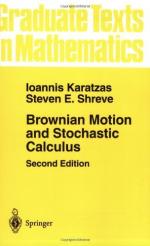|
This section contains 492 words (approx. 2 pages at 300 words per page) |

|
Brownian motion is the constant but irregular zigzag motion of small colloidal particles such as smoke, soot, dust, or pollen that can be seen quite clearly through a microscope.
In 1827, Robert Brown, a Scottish botanist, prepared a slide by adding a drop of water to pollen grains. As he watched the tiny particles of pollen under his microscope, Brown noticed that they were constantly jiggling about. He thought that the motion might be related to life processes within the pollen, but later he observed the same kind of zigzag motion with pollen from plants that had been dead for many years. Others found the same strange motion when they observed tiny inanimate particles of dye, dust, smoke, or soot.
Brown could offer no explanation for his observation, which became known as Brownian motion, nor could anyone else until James Clerk Maxwell and others developed the kinetic...
|
This section contains 492 words (approx. 2 pages at 300 words per page) |

|


